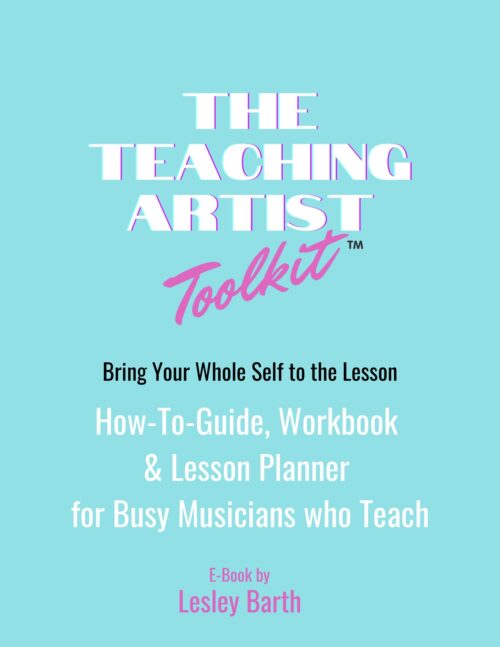Whether you’re a brand new teacher with their first roster of students (congrats!) or you’ve been shaping minds, voices, and fingers for a while, those who teach private music lessons know every lesson is different.

You will have students of different ages, abilities, learning styles, and, often instruments, and need to cater to each student’s individual needs and interests.
Plus, we’re all human and, well, life happens. Some weeks students practice a ton, and some weeks, eh…not so much.
Given all that, a complex classroom-style lesson planning process is out of the question. It would take far too much time to map out specific lessons and curricula for every single student. So, fairly regularly, we don’t do it and rely instead on our instincts or experience.
Which can work. Sometimes. Until it doesn’t.
And even when it’s “working,” it’s stressful.
“Winging it” is exhausting for two reasons: 1) it’s taxing on our brains to have to come up with plans and ideas on the spot, even if we are (rightly) following our student’s interests and abilities, and 2) we always have this nagging feeling that the lesson could be better. If only we had prepared more!
But…how? How can we prepare given the unique learning path of each student?
Well, I’m here to share a very simple, holistic approach that will radically transform your teaching practice, as it did mine.
And it’s simple (not easy, necessarily, but simple):
Set goals with your students. And not just any goals – SMART goals:
- Specific
- Measurable
- Attainable
- Relevant
- Time-Sensitive
We’ve likely come across this methodology before, but applying it to teaching private lessons is a game changer.
For example, “getting better at piano” is not a SMART goal – but playing “Für Elise” from memory by December is.
The benefits for you, the teacher:
- You know where the ship’s headed, and since your student set the goals with you, you know they want to go there.
- No more winging it week after week!
- Getting them bought into their goals will make practicing more fun and connect it to the things they specifically want to be able to do.
The benefits for your student:
- They know where the ship’s headed, and they had input on where!
- They’re motivated to learn new skills.
- They’ve bought into their own success (which is key since their success is largely dependent on what they do in between lessons)
- By setting goals (and particularly by writing them down!), they are much more likely to make progress and go farther than those who don’t.
But one of the best fringe benefits here?
Lesson prep sorta does itself as it becomes, essentially, just working backward from that goal.
And as goals shift and change, you can adapt easily.
Following the above example, here are a few milestones you might want to hit on your student’s way to playing “Für Elise” from memory by December:
- Learn right hand
- Learn left hand
- Learn entire song hands together
- Play through entire song technically
- Play through entire song technically a tempo
- Play through entire song with expressions a tempo
- Play through entire song with expressions a tempo FROM MEMORY
These milestones can help shape weekly practice plans.
Of course, there is more to do than just work on a single goal with a student, but that’s where the real beauty of this lies. The technique work you do should support the goal, the creative work you do should support the goal, and the games you play (if a student is young enough) should support the goal.
In this way, setting one (or several) goals with your student for the next quarter (three months) or so will quickly establish a plan for the next quarter of lessons and inspire them to get through the drudgery of working on arpeggios and certain scales because they see how it can connect to the song.
Bring intention, efficiency, and effectiveness to your lessons with this simple plan, and – best of all – get your students bought in to their own success.
After all, they’re the ones who need to practice week after week!
(Want to learn more about Lesley’s process for setting goals? Check out The Teaching Artist Toolkit below!)






Leave A Comment